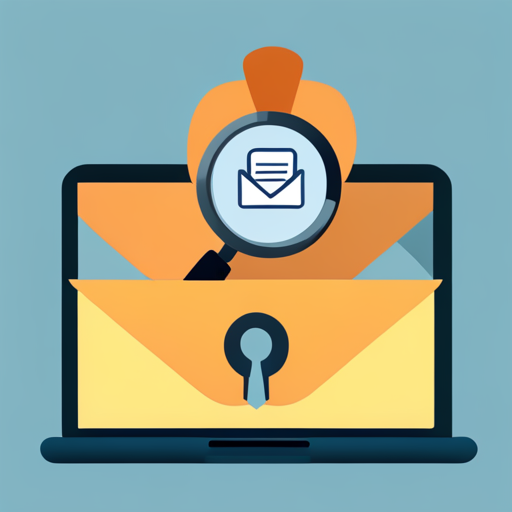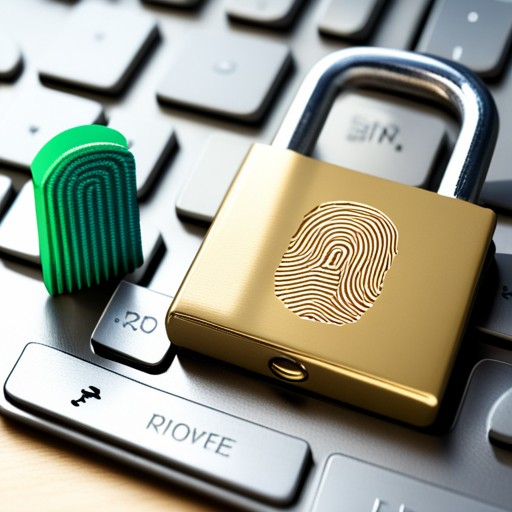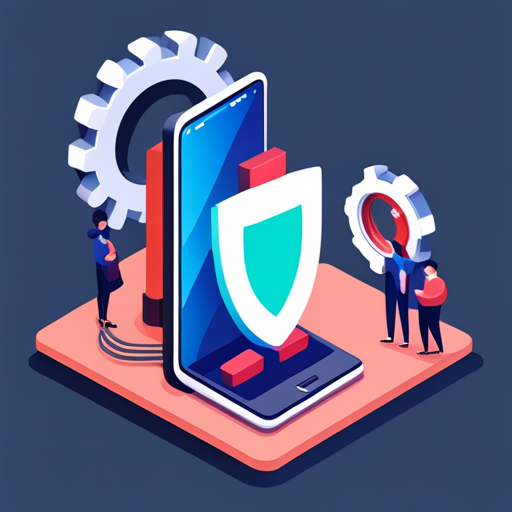A significant amount of your personal and professional life is spent online. The risk of falling victim to phishing attempts, a cybercrime where fraudsters deceive unsuspecting individuals into sharing sensitive information, has increased. Acquiring knowledge about various techniques to safeguard one’s digital life and thwart phishing attempts is important.
This article aims to provide valuable insights into effective methods for identifying and avoiding phishing attacks. By comprehending crucial steps such as recognizing suspicious emails, exercising caution with links and attachments, utilizing strong passwords and multi-factor authentication, maintaining updated software and devices, and staying informed about the latest phishing scams and trends, individuals can significantly reduce the likelihood of becoming victims of cybercrime and preserve their digital well-being.
Key Takeaways
– Recognize and exercise caution with suspicious emails, links, and attachments
– Utilize strong passwords and multi-factor authentication to enhance account security
– Maintain updated software and devices to reduce the risk of falling victim to phishing attempts
– Stay informed about the latest phishing scams and trends through cybersecurity news and updates, and share knowledge with friends and family to raise overall digital literacy and awareness
Learn to Spot Suspicious Emails

Recognizing suspicious emails is crucial in protecting oneself from phishing attacks and maintaining a secure digital presence. Identifying email red flags requires paying close attention to various elements such as the sender’s address, the content of the email, and any attached files. Unusual sender behavior, such as unexpected emails from known contacts or emails containing irrelevant or nonsensical information, should also raise suspicion.
One should familiarize themselves with common phishing tactics to enhance the ability to spot suspicious emails. These tactics include using urgent language, asking for personal information, and including links or attachments that prompt the recipient to download malware or enter sensitive data. By understanding these tactics and monitoring email correspondence, individuals can effectively safeguard their digital lives from phishing threats.
Be Cautious with Links and Attachments

A staggering 94% of malware is delivered via email, emphasizing the importance of exercising caution when dealing with links and attachments in messages. Link verification and attachment safety are crucial in safeguarding one’s digital life against phishing attempts.
Links can be designed to look trustworthy, but they might lead to malicious websites or initiate a malware download. Similarly, attachments can contain viruses, ransomware, and other harmful software that could compromise the security of personal data and devices.
To minimize the risk of falling prey to phishing attacks, individuals should:
– Hover over links to check the URL before clicking, ensuring the link leads to a legitimate website.
– Refrain from downloading attachments from unknown or suspicious sources, and scan them with antivirus software before opening.
– Utilize email security software to filter out potentially harmful messages.
By being cautious with links and attachments, individuals can significantly reduce the likelihood of falling victim to phishing attacks and protect their digital life from potential harm.
Use Strong Passwords and Multi-Factor Authentication

Implementing robust passwords and multi-factor authentication significantly enhances the security of online accounts, providing an effective defense against unauthorized access and phishing attacks. One of the fundamental principles for maintaining secure online accounts is using strong, unique passwords for each service. Password management tools can help users generate and store complex passwords, thus reducing the risk of falling victim to phishing attempts. Additionally, implementing multi-factor authentication (MFA) adds an extra layer of security, requiring the user to provide more than one form of verification before accessing an account.
| Method | Description | Example |
|---|---|---|
| Strong Passwords | Use a combination of upper and lowercase letters, numbers, and special characters. | p@S5w0rD! |
| Unique Passwords | Do not reuse the same password for multiple accounts. | Different passwords for each account |
| Password Management Tools | Use tools to generate and store complex passwords securely. | LastPass, 1Password |
| Multi-Factor Authentication | Require more than one form of verification, such as a password and a one-time code. | Authentication apps, SMS codes |
Authentication apps, such as Google Authenticator or Authy, are another effective method to prevent phishing attacks. These apps generate one-time codes that expire after a short period, making it difficult for attackers to gain unauthorized access even if they manage to obtain the user’s password. By implementing strong passwords, using password management tools, and enabling multi-factor authentication, individuals can significantly reduce their vulnerability to phishing attempts and enhance the overall security of their digital lives.
Keep Your Software and Devices Up-to-Date

Ensuring that software and devices are consistently updated is crucial to mitigating phishing risks, as cybercriminals often exploit outdated systems riddled with security loopholes. The process of updating systems involves patching software vulnerabilities, which attackers commonly target to gain unauthorized access to personal information.
Implementing a robust device management strategy ensures that all devices connected to a network are equipped with the latest security features, thereby reducing the likelihood of a successful phishing attack.
Regularly scheduling updates and enabling automatic updates for operating systems, applications, and security software can significantly reduce the risk of falling victim to phishing attempts. Additionally, keeping abreast of the latest security news and being aware of newly discovered vulnerabilities can further bolster one’s defenses against cyber threats.
In conclusion, maintaining up-to-date software and devices is an essential component of a comprehensive strategy to safeguard one’s digital life from phishing attempts and other cybersecurity risks.
What are some common phishing strategies that hackers use?
Understanding phishing strategies is crucial in safeguarding against malicious cyber attacks. Hackers often employ common tactics, such as email spoofing, where they pretend to be a reputable entity to deceive victims into sharing sensitive information. Another method is creating fake websites that mimic legitimate ones, tricking users into entering personal details. Awareness of these strategies is key to protecting oneself from falling victim to these scams.
Stay Informed About Latest Phishing Scams and Trends

Staying informed about the latest phishing scams and trends is crucial in safeguarding one’s digital life. Following cybersecurity news and updates allows individuals to remain vigilant against potential threats and adapt their online behavior accordingly.
Sharing this knowledge with friends and family raises awareness and fosters a collective effort to combat phishing attacks and protect sensitive information.
Follow Cybersecurity News and Updates
Regularly monitoring cybersecurity news and updates allows individuals to stay informed about emerging threats and best practices for defending against phishing attempts. By subscribing to various cybersecurity podcasts and ensuring news source reliability, one can stay up-to-date with cybercriminals’ latest trends and techniques. This information can be crucial for implementing preventative measures and minimizing the risk of falling victim to phishing scams.
Several resources can be utilized to follow cybersecurity news and updates, including:
– Industry blogs and websites: These platforms provide expert insights and in-depth analysis of the latest cybersecurity trends and incidents.
– Social media accounts of cybersecurity professionals: By following experienced individuals in the field, one can access their expert opinions and advice.
– Cybersecurity podcasts: These audio platforms can provide valuable information and discussions on phishing attempts and other cybersecurity topics.
– Newsletters from cybersecurity organizations: By subscribing to newsletters from reputable organizations, one can receive regular updates and information on the latest threats and best practices.
– Online forums and discussion boards: Engaging in conversations with other individuals interested in cybersecurity can provide a wealth of knowledge and experience to draw from.
By staying informed through these resources, individuals can better safeguard their digital lives and thwart potential phishing attempts.
Share Knowledge with Friends and Family to Raise Awareness
Disseminating knowledge about cybersecurity and phishing prevention among friends and family members can significantly raise awareness and reduce the risk of falling victim to such scams. For instance, a person who learns about a new phishing tactic can promptly alert their network, equipping them with the necessary information to identify and avoid similar threats in the future. By fostering a culture of family cybersecurity, individuals can collectively build a strong defense against cybercriminals, protecting their personal information and financial assets.
Digital literacy is crucial in empowering people to recognize and respond to phishing attempts effectively. By sharing knowledge and resources with friends and family, individuals can help improve the overall digital literacy of their network, leading to a safer online environment for everyone. The table below provides a simple framework for raising cybersecurity awareness among family and friends:
| Steps to Raise Cybersecurity Awareness | Description |
|---|---|
| 1. Share Cybersecurity News | Keep your network informed about the latest cyber threats and phishing techniques. |
| 2. Provide Educational Resources | Recommend articles, videos, or websites that explain cybersecurity and phishing prevention. |
| 3. Discuss Personal Experiences | Share stories of phishing attempts and how they were identified and handled. |
By following these steps, individuals can positively impact their friends and family members’ understanding of cybersecurity and help them develop the skills needed to identify and avoid phishing attempts in the digital world.
How Can Understanding Types of Cyber Attacks Help Prevent Phishing Attempts?
Understanding types of cyber attacks prevention is crucial in preventing phishing attempts. By familiarizing ourselves with different attack methods like malware, ransomware, and social engineering, we can better recognize suspicious emails or websites. This knowledge enables us to implement necessary security measures, such as robust firewalls and regular software updates, helping to safeguard against potential phishing attacks.
Conclusion
In conclusion, the significance of securing one’s digital presence cannot be overstated. By employing techniques such as recognizing suspicious emails, exercising caution with links and attachments, utilizing robust passwords and multi-factor authentication, maintaining updated software and devices, and staying informed on the latest phishing scams and trends, individuals can navigate the digital world with increased confidence and security.
As the adage goes, knowledge is power; thus, arming yourself with the strategies above is akin to building a digital fortress, safeguarding valuable information from the relentless onslaught of cyber threats.
